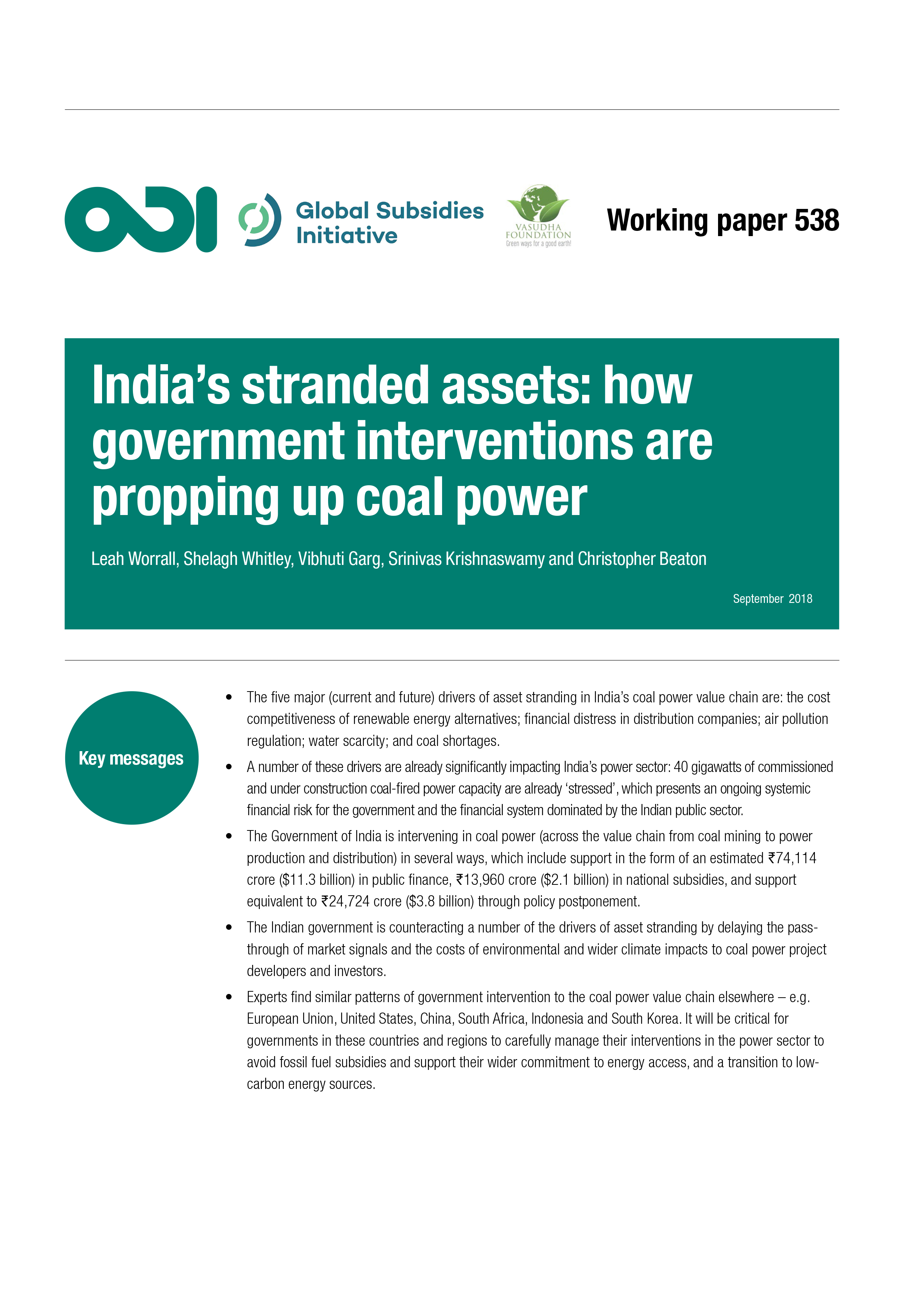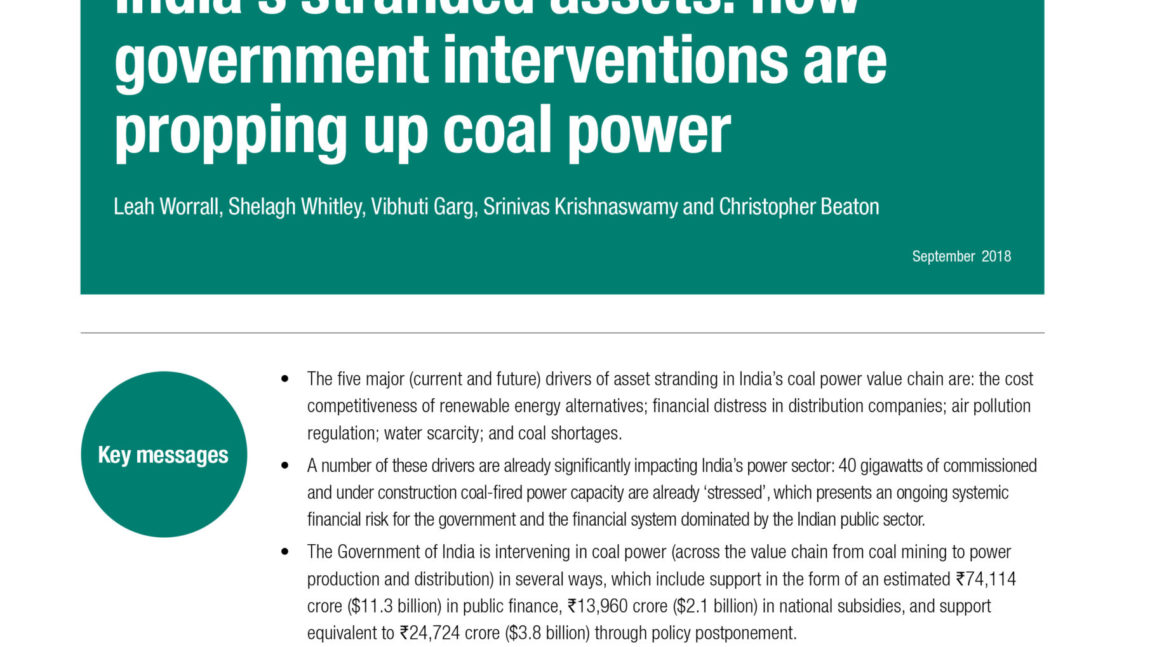
India’s stranded assets: how government interventions are propping up coal power
• The five major (current and future) drivers of asset stranding in India’s coal power value chain are: the cost
competitiveness of renewable energy alternatives; financial distress in distribution companies; air pollution
regulation; water scarcity; and coal shortages.
• A number of these drivers are already significantly impacting India’s power sector: 40 gigawatts of commissioned
and under construction, coal-fired power capacity is already ‘stressed’, which presents an ongoing systemic
financial risk for the government and the financial system dominated by the Indian public sector.
• The Government of India is intervening in coal power (across the value chain from coal mining to power
production and distribution) in several ways, which include support in the form of an estimated ₹74,114
crore ($11.3 billion) in public finance, ₹13,960 crore ($2.1 billion) in national subsidies, and support
equivalent to ₹24,724 crore ($3.8 billion) through policy postponement.
• The Indian government is counteracting a number of drivers of asset stranding by delaying the passthrough
of market signals and the costs of environmental and wider climate impacts to coal power project
developers and investors.
• Experts find similar patterns of government intervention to the coal power value chain elsewhere – e.g.
European Union, United States, China, South Africa, Indonesia and South Korea. It will be critical for
governments in these countries and regions to carefully manage their interventions in the power sector to
avoid fossil fuel subsidies and support their wider commitment to energy access, and a transition to low-carbon
energy sources.




